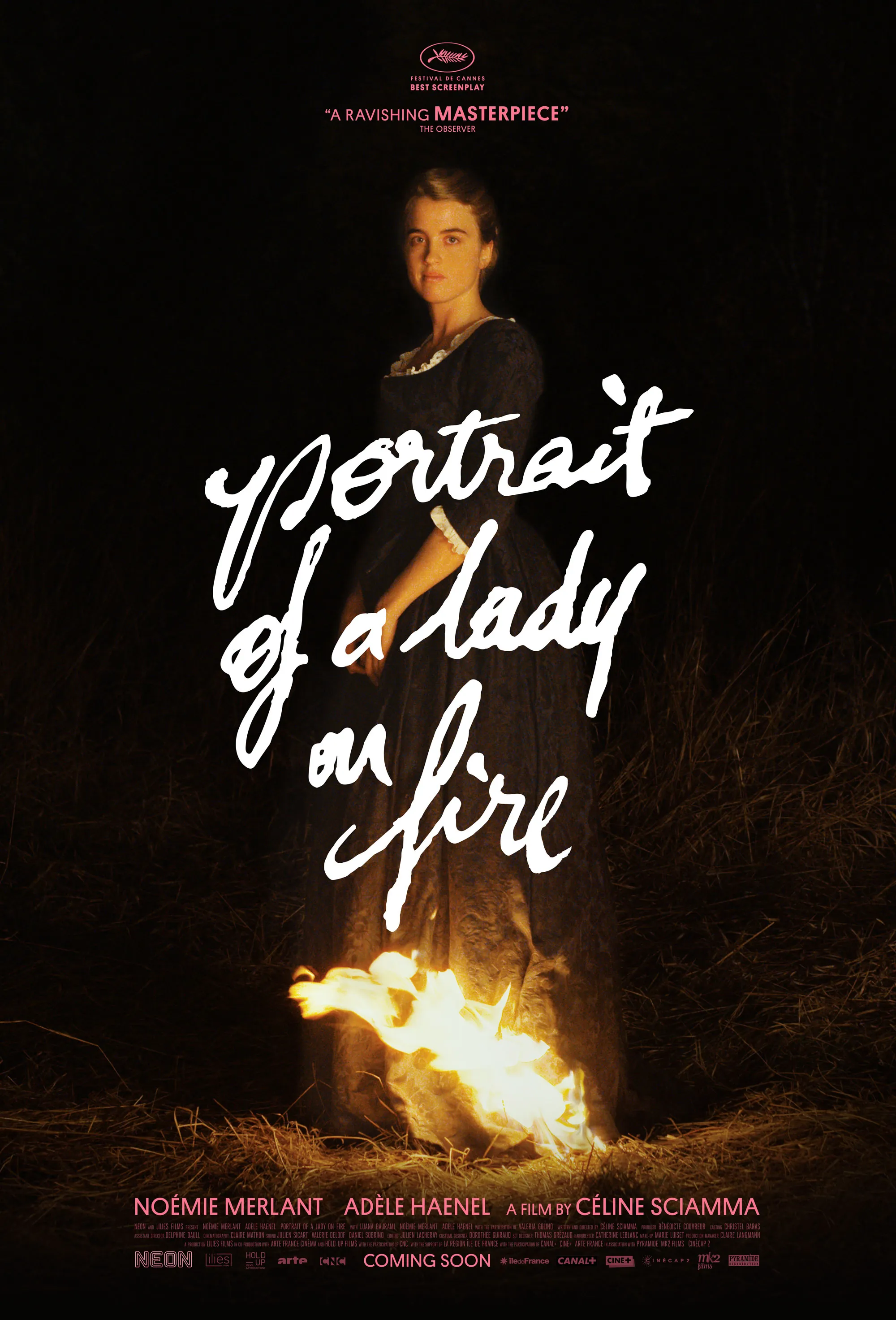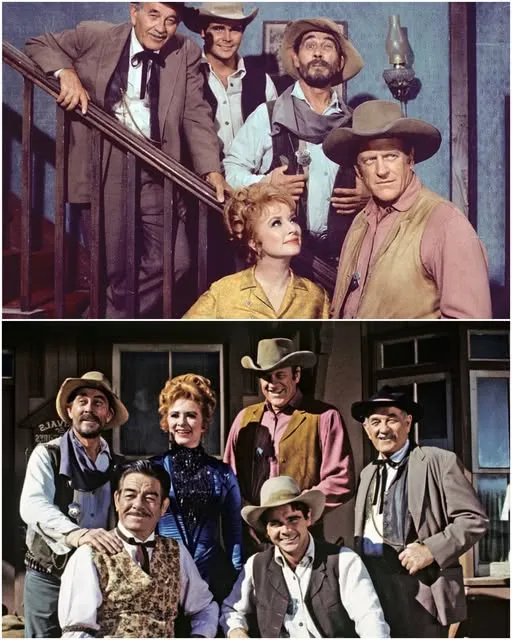Portrait of a Lady on Fire (2019): A Tender and Intimate Exploration of Love and Desire
Portrait of a Lady on Fire (2019), directed by Céline Sciamma, is a visually stunning and emotionally powerful film that examines the complexity of love, identity, and the fleeting nature of passion. Set in 18th-century France, this period drama unfolds a tale of forbidden romance between two women, Marianne (played by Noémie Merlant), a talented portrait artist, and Héloïse (played by Adèle Haenel), an aristocratic young woman. Marianne is commissioned to paint a portrait of Héloïse, who is being prepared for an arranged marriage to a wealthy suitor. The film’s narrative delves deeply into themes of unspoken desire, societal constraint, and the ineffable connection that forms between two women in an era where such relationships were neither recognized nor accepted. Sciamma's handling of these themes, combined with breathtaking cinematography, creates a nuanced, meditative love story that has captured the hearts of audiences and critics worldwide.
The plot begins when Marianne, a successful artist, is tasked with painting the portrait of Héloïse, who is reluctant to sit for the painting. Héloïse’s mother, living on a remote island off the coast of Brittany, needs the portrait for her daughter’s upcoming marriage, a union arranged for financial security. However, Héloïse refuses to comply with the portrait commission, having already rejected several suitors. To circumvent this, Marianne is instructed to secretly observe Héloïse and paint her without her knowledge. What follows is a slow, tender process of observation and quiet intimacy. Marianne’s role as an artist is central to the film, as she is tasked with capturing not only Héloïse’s likeness but the essence of her being. The quiet, daily interactions between the two women, devoid of the spoken word, create a growing sense of closeness between them. They begin to communicate through shared glances, subtle gestures, and the act of painting itself. As Marianne carefully observes Héloïse, the two women begin to form an unspoken bond. Héloïse opens up about her feelings of confinement, her lack of agency in the marriage arranged for her, and the quiet rebellion she feels against a life she has not chosen. As the days pass and the painting begins to take shape, their relationship shifts from mere artist and subject to something far deeper, more intimate, and far more emotionally charged.

As the film progresses, the emotional undercurrent of the story becomes increasingly palpable. Marianne’s growing affection for Héloïse mirrors the slow development of the portrait itself, with each brushstroke representing not just artistic endeavor, but emotional investment. The process of painting becomes a metaphor for their developing relationship—an act of creation that brings them closer, while also underscoring the tension and limitations of their circumstances. The women’s emotional connection intensifies, culminating in a passionate love affair, as both women find in each other a shared longing for freedom, agency, and self-expression. Marianne’s vulnerability as an artist is paralleled by Héloïse’s growing emotional openness, as she begins to realize that the portrait is not only a representation of her outward appearance but a reflection of her inner self, as seen through Marianne’s eyes. This act of seeing and being seen becomes central to their connection, and it is through the portrait that their desire for each other is fully realized.
One of the film’s most profound explorations is its treatment of memory. As Marianne paints Héloïse, the process serves as a way of immortalizing their time together. While their relationship is fleeting, the portrait itself becomes an enduring symbol of their bond. The work of art is not just a likeness but an encapsulation of their shared moments, their longing, and their love, even though it is a love that cannot be expressed or sustained in the world they inhabit. The portrait, then, represents the transient nature of their connection, yet also the emotional permanence it creates. Marianne’s act of capturing Héloïse’s likeness becomes an act of love and defiance, a silent rebellion against the constraints placed on both of them by society. The film poignantly captures the essence of a love that, though impermanent, carries lasting emotional weight. Sciamma masterfully explores the idea that love, particularly the love between women, is often relegated to memory—something cherished but fleeting, made more beautiful by its transience. Visually, Portrait of a Lady on Fire is nothing short of mesmerizing. Cinematographer Claire Mathon creates an atmosphere that reflects the emotional depth of the film, using light, shadow, and color to convey the intimacy and tension between Marianne and Héloïse. The film’s slow, lingering shots of the landscape, the characters' faces, and the surroundings contribute to the immersive quality of the film, allowing the viewer to experience the raw, emotional journey of the characters. The natural environment, from the windswept cliffs to the isolated interiors of the house, becomes an extension of the emotional landscape, highlighting the solitude of the women’s lives and the isolation of their love affair. The use of lighting is particularly striking, with scenes often bathed in warm, golden hues, creating a sense of intimacy and highlighting the vulnerability of the characters. Marianne and Héloïse are often filmed in close-up, allowing the camera to linger on their expressions, capturing the subtle shifts in their emotions. This visual intimacy reinforces the film’s central themes of desire, longing, and the quiet yet profound connection that builds between the two women. The film’s sparse yet evocative soundtrack enhances its emotional impact. The music, composed by Jean-Baptiste de Laubier, is used sparingly, allowing the natural sounds of the environment—wind, waves, and the quiet movements of the characters—to dominate the soundscape. This minimalist approach underscores the quiet, restrained nature of the relationship, focusing on the small, intimate moments between Marianne and Héloïse. The absence of a traditional score allows the emotions of the characters to take center stage, with the music only emerging in key moments of intensity or reflection, underscoring the internal journeys of the two women as they navigate their forbidden love. At its core, Portrait of a Lady on Fire is a film about female desire, the constraints of societal expectations, and the complexities of identity. The relationship between Marianne and Héloïse is not just a romantic affair, but a quiet act of resistance against a world that seeks to define and control the lives of women. In a time when women’s autonomy was severely limited, their love for each other becomes an act of liberation—a brief but significant escape from the roles society has carved out for them. The film deftly portrays the struggle for personal freedom in an oppressive, patriarchal society, offering a rare and poignant glimpse into the complexities of female love. Sciamma’s direction, combined with stunning performances from Noémie Merlant and Adèle Haenel, makes this film a deeply moving and thought-provoking experience that speaks to the universal human desire for connection and the beauty of living authentically, even in a world that demands conformity.

In the final act of the film, the inevitability of separation looms large as both women must face the harsh reality of Héloïse’s arranged marriage. Their love, intense and pure, cannot last, but its impact lingers in their hearts. The ending of the film is a beautiful and heart-wrenching exploration of memory, love, and the passage of time. Sciamma leaves the audience with a powerful reflection on the lasting influence of a love that is remembered, not through a portrait or a painting, but in the hearts of those who lived it. The film ends with a quiet yet poignant acknowledgment of the impermanence of love, while also affirming its power to leave a lasting impression, both on the soul and on the canvas of memory. Portrait of a Lady on Fire is a cinematic masterpiece that challenges conventional representations of love and desire. It is a tender, poetic exploration of the complexities of female identity and passion, brought to life through breathtaking visuals and a deeply emotional narrative. Sciamma’s film stands as an important contribution to both LGBTQ+ cinema and the broader filmic exploration of human connection and the desire for authenticity in a world full of constraints. It is a timeless love story that transcends both time and gender, offering a universal message about the power of love, memory, and the act of truly seeing one another.




